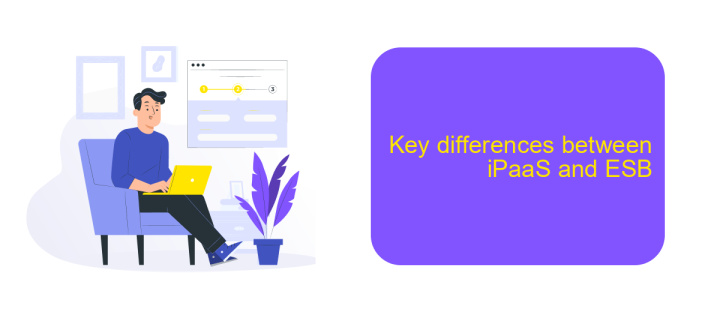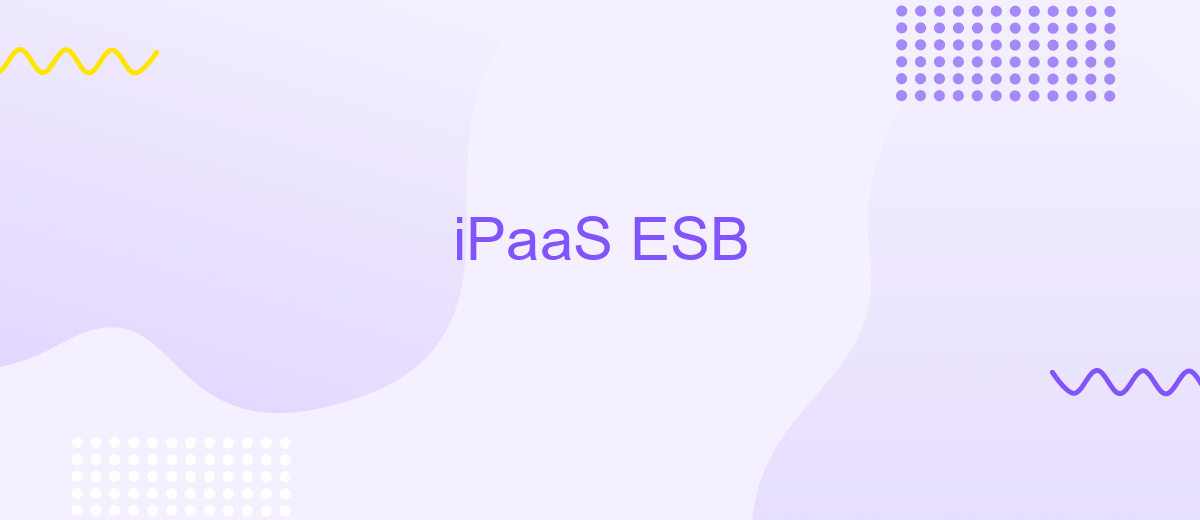iPaaS ESB
In today's rapidly evolving digital landscape, businesses are increasingly turning to integration solutions to streamline operations and enhance connectivity. Two prominent technologies in this domain are Integration Platform as a Service (iPaaS) and Enterprise Service Bus (ESB). This article explores the key differences, benefits, and use cases of iPaaS and ESB, helping organizations make informed decisions about their integration strategies.
Introduction
In the rapidly evolving landscape of enterprise IT, integrating various applications and data sources has become a critical necessity. iPaaS (Integration Platform as a Service) and ESB (Enterprise Service Bus) are two prominent approaches that organizations utilize to streamline their integration processes. iPaaS offers a cloud-based solution that simplifies the integration of disparate systems, while ESB provides a middleware framework for enabling communication between various applications within an enterprise.
- iPaaS offers scalability and flexibility with its cloud-based infrastructure.
- ESB ensures reliable and secure communication between enterprise applications.
- Both solutions aim to reduce the complexity of integration and improve operational efficiency.
One of the services that exemplifies the power of iPaaS is ApiX-Drive. This platform enables seamless integration between numerous applications and services without requiring extensive coding knowledge. By leveraging ApiX-Drive, businesses can automate workflows, synchronize data, and enhance overall productivity. Whether you are a small startup or a large enterprise, choosing the right integration strategy is crucial for achieving your business objectives.
Benefits of iPaaS over ESB

iPaaS offers numerous advantages over traditional ESB systems, particularly in terms of flexibility and scalability. While ESB requires significant on-premises infrastructure and maintenance, iPaaS solutions, like ApiX-Drive, operate entirely in the cloud, reducing both setup time and operational costs. iPaaS platforms are designed to handle complex integrations with ease, providing a more agile approach to connecting disparate systems. This makes it easier for businesses to adapt to changing requirements and scale their operations without the need for extensive reconfiguration.
Furthermore, iPaaS solutions typically come with user-friendly interfaces and pre-built connectors, which simplify the integration process. ApiX-Drive, for instance, allows users to set up integrations quickly without the need for deep technical knowledge, thereby democratizing access to sophisticated integration capabilities. This contrasts with ESB, which often requires specialized skills and significant development effort. By leveraging iPaaS, businesses can accelerate their digital transformation initiatives, improve operational efficiency, and focus on innovation rather than the complexities of system integration.
Challenges of iPaaS adoption

Adopting an Integration Platform as a Service (iPaaS) presents several challenges for organizations, despite its numerous advantages. These challenges can affect the efficiency and effectiveness of integration processes if not properly addressed.
- Complexity of Integration: Integrating diverse applications and data sources can be highly complex, requiring specialized skills and knowledge.
- Data Security and Compliance: Ensuring data security and compliance with regulations such as GDPR can be difficult when data is transferred between multiple systems.
- Scalability Issues: As businesses grow, their integration needs also expand, which can strain the scalability of iPaaS solutions.
- Cost Management: The cost associated with iPaaS solutions can escalate quickly, especially with extensive data processing and high transaction volumes.
- Vendor Lock-in: Relying heavily on a single iPaaS provider can lead to vendor lock-in, making it challenging to switch providers or adopt new technologies.
To mitigate these challenges, organizations can leverage services like ApiX-Drive, which simplifies the integration process by providing user-friendly tools and extensive support. By carefully planning and selecting the right iPaaS solutions, businesses can overcome these obstacles and achieve seamless integration across their systems.
Key differences between iPaaS and ESB

While both iPaaS (Integration Platform as a Service) and ESB (Enterprise Service Bus) serve to integrate various applications and services within an organization, they differ significantly in their approach and capabilities. iPaaS is a cloud-based solution that facilitates seamless integration through pre-built connectors and user-friendly interfaces, making it suitable for businesses looking for quick and scalable integration solutions.
On the other hand, ESB is typically an on-premise solution that acts as a middleware to connect disparate systems. It requires more intricate setup and management, making it a better fit for organizations with complex, custom integration needs. ESB focuses on message routing, transformation, and protocol conversion, offering robust control over data flows.
- Deployment: iPaaS is cloud-based, while ESB is usually on-premise.
- Ease of Use: iPaaS offers user-friendly interfaces and pre-built connectors; ESB requires more technical expertise.
- Scalability: iPaaS scales easily with cloud resources; ESB may need hardware upgrades.
- Customization: ESB provides more control and customization options compared to iPaaS.
For businesses aiming for quick and efficient integration, platforms like ApiX-Drive offer a practical iPaaS solution. ApiX-Drive simplifies the integration process with its intuitive interface and extensive library of pre-built connectors, allowing businesses to automate workflows without extensive technical knowledge.
Conclusion
In conclusion, the choice between iPaaS and ESB largely depends on the specific needs and architecture of your organization. iPaaS offers a more flexible, scalable, and cost-effective solution for cloud-based integrations, making it ideal for modern, agile businesses. On the other hand, ESB provides robust, on-premise integration capabilities that are essential for enterprises with complex legacy systems and stringent security requirements.
Tools like ApiX-Drive further simplify the integration process by offering user-friendly interfaces and pre-built connectors, enabling even non-technical users to set up integrations quickly and efficiently. By leveraging such services, organizations can streamline their workflows, reduce operational costs, and achieve seamless connectivity across disparate systems. Ultimately, the right choice will depend on your organizational goals, existing infrastructure, and future scalability needs.


FAQ
What is iPaaS?
How does iPaaS differ from ESB?
What are the benefits of using iPaaS?
Can iPaaS be used for both cloud and on-premise applications?
How can I get started with iPaaS for my business?
Time is the most valuable resource for business today. Almost half of it is wasted on routine tasks. Your employees are constantly forced to perform monotonous tasks that are difficult to classify as important and specialized. You can leave everything as it is by hiring additional employees, or you can automate most of the business processes using the ApiX-Drive online connector to get rid of unnecessary time and money expenses once and for all. The choice is yours!

